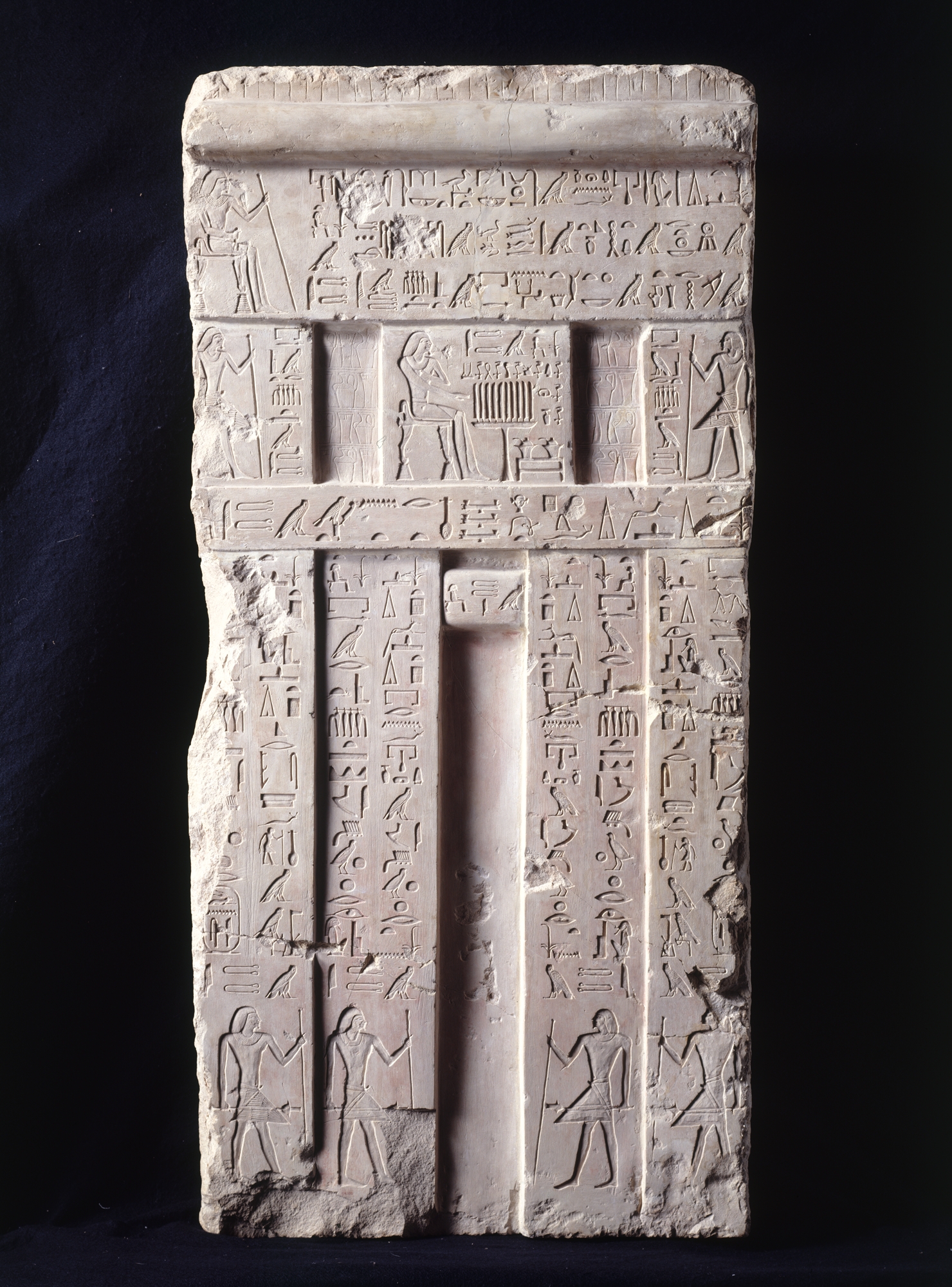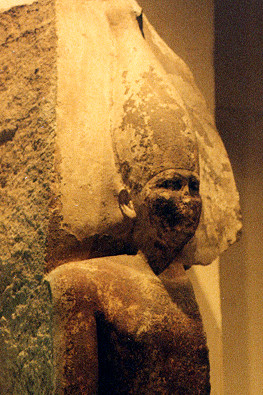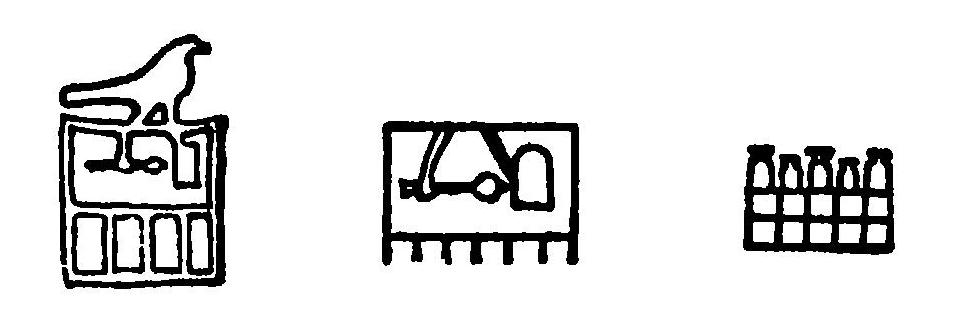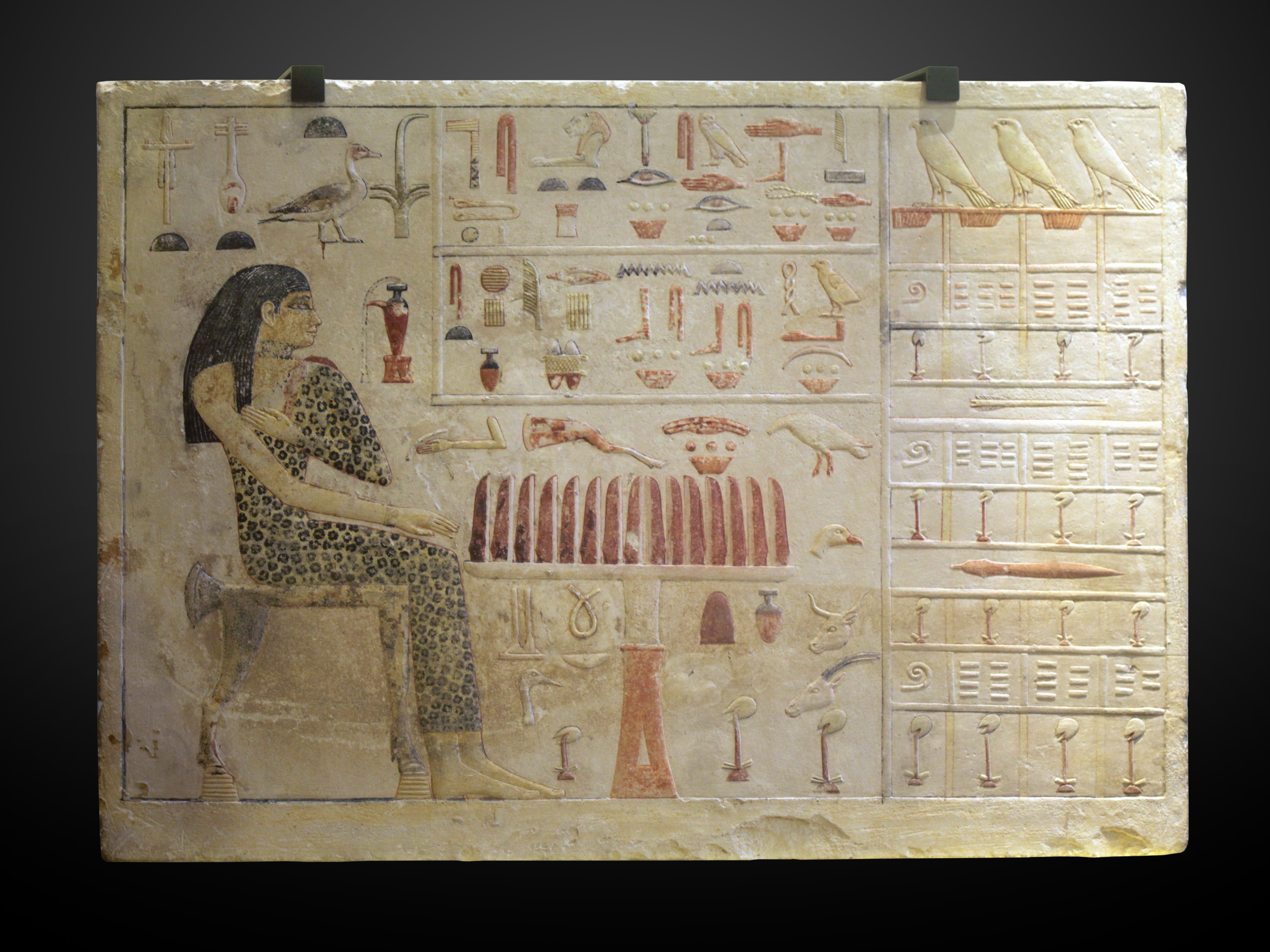|
Prophecy Of Neferti
The ''Prophecy of Neferti'' is one of the few surviving literary texts from ancient Egypt. The story is set in the Old Kingdom, under the reign of King Sneferu. However, the text should be attributed to an individual named Neferyt, who most likely composed it at the beginning of the Twelfth Dynasty. The nature of the literary text is argued upon. There are a number of different theories stating that the literature is a historical romance in pseudo-prophetic form, political literature, religious motivation as well as a literary text created to change and improve the situation in Egypt during the Twelfth Dynasty. Content The Prophecies of Neferti is set in a fictionalized court of King Sneferu ( 2575–2551 BC), who ruled Egypt during the Fourth Dynasty. The sage Neferti is summoned to the court so that he can entertain the King with fine speeches. He is asked to speak of the future rather than the past, the sage prophesies the downfall of the Egyptian nation by civil war, leading t ... [...More Info...] [...Related Items...] OR: [Wikipedia] [Google] [Baidu] |
Ostracon With Fragment From The Pessimistic Literary Piece 'The Prophecies Of Neferti' LACMA M
An ostracon (Greek: ''ostrakon'', plural ''ostraka'') is a piece of pottery, usually broken off from a vase or other earthenware vessel. In an archaeological or epigraphical context, ''ostraca'' refer to sherds or even small pieces of stone that have writing scratched into them. Usually these are considered to have been broken off before the writing was added; ancient people used the cheap, plentiful, and durable broken pieces of pottery around them as a convenient medium to write on for a wide variety of purposes, mostly very short inscriptions, but in some cases very long. Ostracism In Classical Athens, when the decision at hand was to banish or exile a certain member of society, citizen peers would cast their vote by writing the name of the person on the shard of pottery; the vote was counted and, if unfavorable, the person was exiled for a period of ten years from the city, thus giving rise to the term ''ostracism''. Broken pottery shards were also used for anal hygiene. ... [...More Info...] [...Related Items...] OR: [Wikipedia] [Google] [Baidu] |
Old Kingdom
In ancient Egyptian history, the Old Kingdom is the period spanning –2200 BC. It is also known as the "Age of the Pyramids" or the "Age of the Pyramid Builders", as it encompasses the reigns of the great pyramid-builders of the Fourth Dynasty, such as King Sneferu, under whom the art of pyramid-building was perfected, and the kings Khufu, Khafre and Menkaure, who commissioned the construction of the pyramids at Giza. Egypt attained its first sustained peak of civilization during the Old Kingdom, the first of three so-called "Kingdom" periods (followed by the Middle Kingdom and New Kingdom), which mark the high points of civilization in the lower Nile Valley. The concept of an "Old Kingdom" as one of three "golden ages" was coined in 1845 by the German Egyptologist Baron von Bunsen, and its definition evolved significantly throughout the 19th and the 20th centuries. Not only was the last king of the Early Dynastic Period related to the first two kings of the Old Ki ... [...More Info...] [...Related Items...] OR: [Wikipedia] [Google] [Baidu] |
Twelfth Dynasty Of Egypt
The Twelfth Dynasty of ancient Egypt (Dynasty XII) is a series of rulers reigning from 1991–1802 BC (190 years), at what is often considered to be the apex of the Middle Kingdom of Egypt, Middle Kingdom (Dynasties XI–XIV). The dynasty periodically expanded its territory from the Nile delta and valley South beyond the Cataracts of the Nile, second cataract and East into Canaan. The Twelfth Dynasty was marked by relative stability and development. It has a notably well recorded history for the period. Its first pharaoh was Amenemhat I and its final was Sobekneferu. History The chronology of the Twelfth Dynasty is the most stable of any period before the New Kingdom of Egypt, New Kingdom. The Turin King List, Turin Royal Canon gives 213 years (1991–1778 BC). Manetho stated that it was based in Thebes, Egypt, Thebes, but from contemporary records it is clear that the first king of this dynasty, Amenemhat I, moved its capital to a new city named "Amenemhat-itj-tawy" ("Amenemha ... [...More Info...] [...Related Items...] OR: [Wikipedia] [Google] [Baidu] |
Sneferu
Sneferu or Soris (c. 2600 BC) was an ancient Egyptian monarch and the first pharaoh of the Fourth Dynasty of Egypt, during the earlier half of the Old Kingdom period (26th century BC). He introduced major innovations in the design and construction of pyramids, and at least three of his pyramids survive to this day. Estimates of his reign vary, with for instance ''The Oxford History of Ancient Egypt'' suggesting a reign from around 2613 to 2589 BC, a reign of 24 years, while Rolf Krauss suggests a 30-year reign, and Rainer Stadelmann a 48-year reign. Sneferu's name His name means "He has perfected me", from ''Ḥr-nb-mꜣꜥt-snfr-wj'' "Horus, Lord of Maat, has perfected me", and is sometimes read Snefru or Snofru. He is also known under his Hellenized name Soris ( by Manetho). Reign length The 24-year Turin Canon figure for Sneferu's reign is considered today to be an underestimate since this king's highest-known date is an inscription discovered at the Red Pyramid of Dahshu ... [...More Info...] [...Related Items...] OR: [Wikipedia] [Google] [Baidu] |
Fourth Dynasty Of Egypt
The Fourth Dynasty of ancient Egypt (notated Dynasty IV) is characterized as a "golden age" of the Old Kingdom of Egypt. Dynasty IV lasted from to c. 2498 BC. It was a time of peace and prosperity as well as one during which trade with other countries is officially documented. The Fourth Dynasty heralded the height of the pyramid-building age. The peaceful rule of the Third Dynasty of Egypt, Third Dynasty allowed artistic expressions to flourish. Building experiments done by King Sneferu led to the evolution of mastaba tombs into the smooth sided pyramids like those seen on the Giza Plateau. No other period in Egyptian history equaled the accomplishments achieved during the Fourth Dynasty.Egypt: Land and Lives of the Pharaohs Revealed, (2005), pp. 80–90, Global Book Publishing: Australia Rulers Summary of Listed Kings Sneferu Sneferu, lauded as "Bringer of Beauty", "Master of All Justice", and "Ruler of Lower and Upper Nile", was the first pharaoh of the fourt ... [...More Info...] [...Related Items...] OR: [Wikipedia] [Google] [Baidu] |
Amenemhat I
:''See Amenemhat (other), Amenemhat, for other individuals with this name.'' Amenemhat I (Egyptian language, Ancient Egyptian: ''Ỉmn-m-ḥꜣt'' meaning 'Amun is at the forefront'), also known as Amenemhet I, was a pharaoh of ancient Egypt and the first king of the Twelfth Dynasty of Egypt, Twelfth Dynasty of the Middle Kingdom of Egypt, Middle Kingdom. Amenemhat I was probably the same as the vizier named Amenemhat who led an expedition to Wadi Hammamat under his predecessor Mentuhotep IV, and possibly overthrew him from power. Scholars differ as to whether Mentuhotep IV was killed by Amenemhat I, but there is no independent evidence to suggest this and there may even have been a period of co-regency between their reigns.E. Hornung, ''History of Ancient Egypt'', 1999 p.50 Amenemhat I was not of royal lineage, born to Senusret and Nefert who were possibly related to the nomarchial family of Elephantine. The composition of some literary works (the ''Prophecy of Neferti ... [...More Info...] [...Related Items...] OR: [Wikipedia] [Google] [Baidu] |
Hermitage Museum
The State Hermitage Museum ( rus, Государственный Эрмитаж, r=Gosudarstvennyj Ermitaž, p=ɡəsʊˈdarstvʲɪn(ː)ɨj ɪrmʲɪˈtaʂ, links=no) is a museum of art and culture in Saint Petersburg, Russia, and holds the largest collection of paintings in the world. It was founded in 1764 when Empress Catherine the Great acquired a collection of paintings from the Berlin merchant Johann Ernst Gotzkowsky. The museum celebrates the anniversary of its founding each year on 7 December, Saint Catherine's Day. It has been open to the public since 1852. ''The Art Newspaper'' ranked the museum 10th in their list of the List of most visited art museums, most visited art museums, with 2,812,913 visitors in 2022. Its collections, of which only a small part is on permanent display, comprise over three million items (the numismatics, numismatic collection accounting for about one-third of them). The collections occupy a large complex of six historic buildings along Palace ... [...More Info...] [...Related Items...] OR: [Wikipedia] [Google] [Baidu] |
Menes
Menes ( ; ; , probably pronounced *; and Μήν) was a pharaoh of the Early Dynastic Period of ancient Egypt, credited by classical tradition with having united Upper and Lower Egypt, and as the founder of the First Dynasty. The identity of Menes is the subject of ongoing debate, although mainstream Egyptological consensus inconclusively identifies Menes with the Naqada III ruler Narmer or his successor, the First Dynasty pharaoh Hor-Aha. Name and identity The name ''Menes'' is first documented in the work of Manetho, an Egyptian historian and priest of the relatively late Ptolemaic period. Manetho noted the name in Greek as Μήνης (transliterated: ''Mênês'').Manetho, Fr. 6, 7a, 7b. Text and translation in ''Manetho'', translated by W.G. Waddell (Cambridge: Harvard University, 1940), pp.26–35 An alternative Greek form, Μιν (transliterated: ''Min''), was cited by the fifth-century-BC historian Herodotus, but this variant appears to be unrelated, the result of c ... [...More Info...] [...Related Items...] OR: [Wikipedia] [Google] [Baidu] |
Ancient Egyptian Literature
Ancient Egyptian literature was written with the Egyptian language from ancient Egypt's History of ancient Egypt, pharaonic period until the end of Egypt (Roman province), Roman domination. It represents the oldest Text corpus, corpus of Literature of Egypt, Egyptian literature. Along with Sumerian literature, it is considered the world's Ancient literature, earliest literature. Writing in ancient Egypt—both Egyptian hieroglyphs, hieroglyphic and hieratic—first appeared in the late 4th millennium BC during the late phase of predynastic Egypt. By the Old Kingdom (26th century BC to 22nd century BC), literary works included Ancient Egyptian funerary texts, funerary texts, epistles and letters, hymns and poems, and commemorative Autobiography, autobiographical texts recounting the careers of prominent administrative officials. It was not until the early Middle Kingdom of Egypt, Middle Kingdom (21st century BC to 17th century BC) that a narrative Egyptian literature was create ... [...More Info...] [...Related Items...] OR: [Wikipedia] [Google] [Baidu] |
Miriam Lichtheim
Miriam Lichtheim (; 3 May 1914, Istanbul – 27 March 2004, Jerusalem) was a Turkish-born American-Israeli egyptologist, known for her translations of ancient Egyptian texts. Biography Miriam was born in Istanbul on May 3, 1914, to Richard Lichtheim – a German-born Jewish politician, publicist, and notable Zionist – and his wife Irene (''née'' Hafter), a Sephardic Jew whose first language was Greek. Her older brother, born 1912, was the British Marxist journalist George Lichtheim. From 1913 to 1917, Richard Lichtheim was the successor to Victor Jacobson, representative of the Zionist World Organization in Istanbul. Due to suspicions of espionage, the Lichtheim family returned to Germany in 1919 following the end of World War I. In 1934, the family emigrated to Palestine, where Miriam studied under Hans Jakob Polotsky in the Hebrew University in Jerusalem. In a paper of recollections about her teacher, she recalls that, at the beginning of the year, in Polotsky's Egyptian ... [...More Info...] [...Related Items...] OR: [Wikipedia] [Google] [Baidu] |
Ancient Egyptian Texts
Ancient Egyptian literature was written with the Egyptian language from ancient Egypt's pharaonic period until the end of Roman domination. It represents the oldest corpus of Egyptian literature. Along with Sumerian literature, it is considered the world's earliest literature. Writing in ancient Egypt—both hieroglyphic and hieratic—first appeared in the late 4th millennium BC during the late phase of predynastic Egypt. By the Old Kingdom (26th century BC to 22nd century BC), literary works included funerary texts, epistles and letters, hymns and poems, and commemorative autobiographical texts recounting the careers of prominent administrative officials. It was not until the early Middle Kingdom (21st century BC to 17th century BC) that a narrative Egyptian literature was created. This was a "media revolution" which, according to Richard B. Parkinson, was the result of the rise of an intellectual class of scribes, new cultural sensibilities about individuality, unpr ... [...More Info...] [...Related Items...] OR: [Wikipedia] [Google] [Baidu] |
Prophecy
In religion, mythology, and fiction, a prophecy is a message that has been communicated to a person (typically called a ''prophet'') by a supernatural entity. Prophecies are a feature of many cultures and belief systems and usually contain divine will or law, or preternatural knowledge, for example of future events. They can be revealed to the prophet in various ways depending on the religion and the story, such as visions, or direct interaction with divine beings in physical form. Stories of prophetic deeds sometimes receive considerable attention and some have been known to survive for centuries through oral tradition or as religious texts. Etymology The English noun "prophecy", in the sense of "function of a prophet" appeared from about 1225, from Old French ''profecie'' (12th century), and from ''prophetia'', Greek language">Greek ''propheteia'' "gift of interpreting the will of God", from Greek ''prophetes'' (see prophet). The related meaning, "thing spoken or writt ... [...More Info...] [...Related Items...] OR: [Wikipedia] [Google] [Baidu] |










